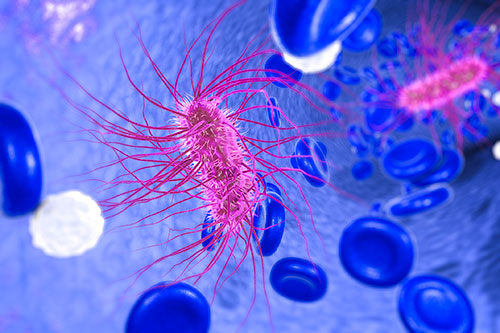E. coli Outbreaks in Romaine Lettuce
It often
happens we're sitting in a restaurant when a well-meaning voice in our head
reminds us, "You should eat a salad." Inspired, we
call over the waiter and confidently order, "One large green salad
with lots of veggies, please!" Moments later, the staff returns
with a neatly arranged plate of fresh cucumbers, crisp lettuce, juicy tomatoes,
and onion rings. It looks so aesthetic that you can't resist snapping a quick
photo for Instagram before diving in.
But here’s
the real question—is it always as healthy as it looks?
A crisp
romaine lettuce salad is a staple in many diets, valued for its nutrition and
versatility. However, this leafy green has been at the heart of several
high-profile Escherichia coli (E. coli) outbreaks,
raising concerns about food safety. From the significant 2018 outbreak to more
recent incidents in 2024, romaine lettuce has repeatedly been linked to serious
illnesses.
What is
E. coli?
Escherichia
coli is a diverse
group of bacteria commonly found in the intestines of humans and warm-blooded
animals. While most strains are harmless and even beneficial, aiding digestion,
certain strains are pathogenic and can cause severe illness. Shiga
toxin-producing E. coli (STEC), particularly the O157:H7 serotype, is a
major concern due to its ability to produce toxins that damage the intestinal
lining, leading to symptoms such as:
- Severe abdominal cramps
- Bloody diarrhea
- Vomiting and fever
In some
cases, STEC infections can progress to hemolytic uremic syndrome (HUS), a
life-threatening condition characterized by kidney failure, especially in young
children and the elderly. The incubation period for E. coli infections
typically ranges from 3 to 8 days, with most patients recovering within 10
days, though complications can be severe (WHO, 2018).
How E.
coli Contaminates Food
E. coli contamination in food occurs through
several pathways, particularly affecting produce like romaine lettuce:
Fecal Contamination
The primary source of E. coli in produce is fecal
matter, often from cattle, which naturally carry STEC in their intestines.
Contamination can occur when:
·
Manure
used as fertilizer is not properly composted, allowing E. coli to
survive.
·
Irrigation
water is contaminated with fecal matter, transferring bacteria to crops.
·
Nearby
livestock operations allow runoff to reach fields, as seen in outbreaks linked
to cattle operations (The Guardian, 2020).
Poor Hygiene
Food handlers who do not practice proper handwashing can
introduce E. coli to produce during harvesting, processing, or
packaging. This is particularly problematic in ready-to-eat products like
pre-washed salads (PMC, 2019).
Cross-Contamination
During processing, E. coli can spread from
contaminated to clean produce if equipment, surfaces, or water used for washing
are not adequately sanitized. This risk is heightened in large-scale operations
where produce from multiple sources is mixed.
Leafy greens are especially vulnerable because they are often
consumed raw, eliminating the opportunity to kill bacteria through cooking,
unlike meat or dairy products (FDA, 2024).
E. coli
Outbreaks in India
In India, E.
coli is a significant public health concern, particularly due to its role
in diarrheal diseases. Key findings include:
- High Burden of Diarrhea: Diarrheal diseases are the
second leading cause of death in children under five, with an estimated
386,600 annual deaths. E. coli is a primary bacterial cause (PMC Study).
- Water Contamination: A study in Punjab found 56% of
urban drinking water samples contaminated with E. coli,
highlighting water as a major transmission route (Journal of Water and Health).
- Food Contamination: Research detected high E.
coli incidence in beef (92% of samples) and lower levels in sprouts
(19%), indicating varied food risks (PMC Study).
Unlike in the
U.S., romaine lettuce is not a commonly reported source of E. coli
outbreaks in India, where staples like rice, lentils, and local vegetables
dominate diets. However, leafy greens and other produce can still be
contaminated through similar pathways, such as contaminated water or poor
hygiene.
Preventive
Measures for Indian Consumers
In India,
sanitation challenges and uneven food safety enforcement necessitate specific
precautions:
1.
Practice Good Hygiene:
o Wash hands with soap before cooking,
eating, or after using the toilet.
o Clean kitchen surfaces and utensils
to prevent cross-contamination.
2.
Handle Food Safely:
o Wash fruits and vegetables under
running water, even if they appear clean.
o Cook meat, poultry, and eggs
thoroughly to kill bacteria.
o Separate raw and cooked foods to
avoid cross-contamination.
3.
Use Safe Water:
o Boil or purify drinking and cooking
water, especially in areas with known contamination risks.
o Use filtered or bottled water if tap
water quality is uncertain.
4.
Be Cautious with Street Food:
o Choose vendors with visible hygiene
practices, such as clean utensils and covered food.
o Prefer freshly cooked, hot foods like
samosas or dosas, which are less likely to harbor bacteria (CNN Street Food).
5.
Store Food Properly:
o Refrigerate perishable foods
promptly, especially in warm climates.
o Avoid leaving cooked food at room
temperature for extended periods.
The Food
Safety and Standards Authority of India (FSSAI) promotes initiatives like Eat
Right India, which encourages safe food practices (Eat Right India). Consumers
can also stay informed about food safety alerts through FSSAI’s Food Import
Rejection Alert (FIRA) portal (FIRA Portal).
India faces
unique challenges in controlling E. coli:
- Sanitation Issues: Contaminated water sources and
inadequate sanitation increase E. coli transmission risks
(Metropolis Healthcare).
- Food Safety Enforcement: The FSSAI, established in
2008, faces challenges with limited testing labs and enforcement officers,
particularly in the unorganized food sector (Drishti IAS).
- Cultural Practices: Street food and open markets,
while culturally significant, pose risks if hygiene standards are not
maintained (Hindustan Times).




Comments
Post a Comment